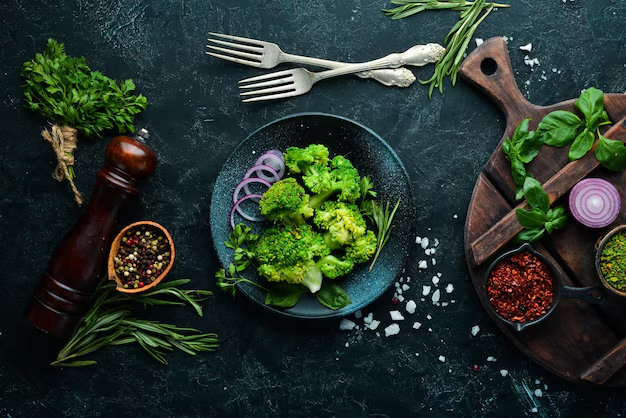Eco Elegance Technique
Green Cuisine and Culinary Arts
Evolution of Green Cuisine
The Rise of Sustainable Eating
Green cuisine has evolved significantly, driven by an increasing focus on sustainability. People are now more conscious about the environmental impact of their food choices.
Globally, plant-based diets and farm-to-table concepts have gained popularity. As consumers demand eco-friendly options restaurants are adapting, creating menus rich in organic and locally-sourced ingredients.
For example, establishments like Big Green and Farmacy in London are champions of this movement, offering dishes that emphasize sustainability.
Key Figures in Green Culinary Arts
Several pioneers have significantly impacted the green culinary scene. Alice Waters, known for establishing the farm-to-table ethos in the US, has inspired countless chefs worldwide.
Her restaurant, Chez Panisse, relies on locally-grown, organic produce. Another influential figure is Dan Barber, chef at Blue Hill, who advocates for sustainable farming and nose-to-tail cuisine.
In the UK, chefs like Hugh Fearnley-Whittingstall have made significant strides, promoting sustainable fishing and ethical meat consumption through his River Cottage venture. These individuals are at the forefront of green cuisine, pushing boundaries and inspiring others.





01
The Rise of Sustainable Eating
Green cuisine has evolved significantly, driven by an increasing focus on sustainability. People are now more conscious about the environmental impact of their food choices.
02
Popularity of Plant-Based Diets
Globally, plant-based diets and farm-to-table concepts have gained popularity. As consumers demand eco-friendly options, restaurants are adapting, creating menus rich in organic and locally-sourced ingredients.
03
Leading Examples of Green Cuisine
Establishments like Big Green and Farmacy in London are champions of this movement, offering dishes that emphasize sustainability and cater to environmentally conscious consumers.
Principles of Green Cuisine
Ethical Sourcing of Ingredients
Ethical sourcing prioritizes the use of ingredients that are obtained in an environmentally and socially responsible manner. This includes sourcing produce from local farmers who employ sustainable practices.
For instance, choosing vegetables grown without synthetic pesticides reduces the environmental impact. Ethical sourcing also extends to fair trade practices, ensuring that workers receive fair wages and work in safe conditions.
Notable examples include sourcing chocolate and coffee from certified fair trade producers. By committing to ethical sourcing, chefs not only support sustainable agriculture but also promote socio-economic fairness within the food supply chain.
Emphasis on Plant-Based Dishes
Green cuisine places a significant emphasis on plant-based dishes, which offer numerous benefits for both health and the environment.
Plant-based foods like legumes, grains, and vegetables require fewer natural resources, such as water and land, compared to animal-based products.
For example, producing 1 kilogram of lentils uses significantly less water than producing 1 kilogram of beef. Moreover, plant-based diets are linked to lower carbon footprints and reduced greenhouse gas emissions.
Restaurants that champion green cuisine, such as Big Green in London, highlight the versatility and flavor of plant-based ingredients, creating dishes that are both nutritious and eco-friendly. This shift towards plant-based meals encourages a more sustainable and ethical approach to food consumption.


Techniques in Green Culinary Arts
Innovative Uses of Whole Foods
Utilise whole foods to their fullest potential, focusing on sustainability. Incorporate every part of vegetables, fruits, and grains in dishes, reducing waste.
For instance, use broccoli stems in soups and smoothies alongside florets. Carrot tops make excellent pesto, complementing the use of their roots in stews.
Explore plant-based proteins like quinoa and lentils in diverse recipes. Including bean burgers and lentil loafs boosts nutrition. Employ fermentation techniques, such as pickling onion peels, to extend shelf life and enhance flavours. Utilise juicing pulp in baked goods and soups to maintain nutrients.
Minimizing Food Waste in Preparation
Minimize food waste by implementing precise preparation techniques. Plan menus around seasonal produce to ensure freshness and reduce spoilage. Use vegetable scraps to create stocks and broths, extracting maximum flavor before composting.
Practice proper storage methods to extend ingredient life. Store herbs in damp cloths and refrigerate root vegetables in sand. Implement “root-to-stem” cooking, ensuring every part of an ingredient has a culinary use. Transform overripe fruits into jams and sauces rather than discarding them.
Encourage mindful portion control to prevent food wastage. Train kitchen staff on efficient cutting techniques, reducing unusable trimmings. Create innovative dishes from leftovers, such as casseroles and frittatas, turning potential waste into culinary treasures.
Impact on Health and Environment
Health Benefits of Green Cuisine
Green cuisine provides numerous health benefits due to its focus on plant-based diets and whole foods. Plant-based diets, incorporating vegetables, fruits, legumes, and grains, contribute to lower risks of chronic illnesses like heart disease, diabetes, and certain cancers.
These dietary choices lead to lower cholesterol levels and improved heart health. A study by the American Heart Association found plant-based eaters had a 16% lower risk of heart disease compared to those who consumed higher amounts of animal products.
Nutrient density is another advantage. Vegetables, fruits, and legumes offer essential vitamins, minerals, antioxidants, and fibres that support overall wellness.
For instance, spinach is high in iron and vitamin K, while berries provide rich sources of antioxidants. This nutrient-rich intake boosts immunity and promotes optimal digestive health.
By avoiding processed foods, which are central to green cuisine, individuals reduce their intake of harmful additives, sodium, and unhealthy fats. The emphasis on whole, minimally processed ingredients translates to better weight management and increased energy levels.
Environmental Impact of Sustainable Cooking
Sustainable cooking practices have a positive effect on the environment by reducing carbon footprints and conserving resources. Plant-based diets, a cornerstone of green cuisine, require fewer resources like water and land compared to meat-based diets.
The Food and Agriculture Organization (FAO) states that livestock production accounts for approximately 14.5% of global greenhouse gas emissions. Shifting to plant-based foods can significantly cut these emissions.
Local sourcing also plays a crucial role. By obtaining ingredients from local farmers and producers, transportation-related emissions decrease, supporting lower carbon footprints. Local sourcing encourages seasonal eating, which reduces the environmental impact of food production.
Minimizing food waste is another key principle. Techniques like using all parts of vegetables and fruits ensure that food waste remains low. For example, carrot tops can be used to make pesto, and apple peels can be dried for snacks.
The UK-based organization WRAP reports that food waste accounts for over 20 million tones of emissions annually in the UK alone.
Efficient use of energy and water resources during cooking also contributes to sustainability. Using energy-efficient appliances and mindful cooking methods, like steaming and sous-vide, can lower energy consumption.
By adopting these practices, the green cuisine movement fosters a more sustainable and environmentally friendly culinary ecosystem.


Green Cuisine Around the World
Cultural Variations in Sustainable Cooking
Green cuisine manifests differently across cultures, reflecting local traditions and ingredient availability. In Japan, Shojin Ryori, a Buddhist vegetarian cuisine, emphasizes simple, seasonal ingredients, reducing waste through full utilization of produce. In India,
Ayurvedic cooking aligns dietary choices with bodily health and minimal environmental impact. Mediterranean countries utilize the abundance of fresh vegetables, legumes and olive oil to create dishes like ratatouille and hummus, championing plant-based diets.
Scandinavian nations focus on wild foraging and preservation, evident in dishes such as fermented vegetables and berries, minimising the need for imported ingredients.
Leading Green Restaurants Globally
Several restaurants worldwide set benchmarks in sustainable dining. Narisawa in Tokyo, Japan, combines French and Japanese culinary techniques, sourcing ingredients locally and seasonally.
Blue Hill in New York, USA, led by Dan Barber, emphasizes farm-to-table dining with a focus on local, sustainably grown produce.
In Copenhagen, Denmark, Restaurant NOMA integrates foraging and fermentation in its dishes, reflecting a commitment to reducing food miles.
Osteria Francescana in Modena, Italy, curates dishes with locally-sourced products, embracing traditional techniques with a modern twist. All these establishments lead by example, demonstrating that high-quality dining can align with eco-friendly practices.
